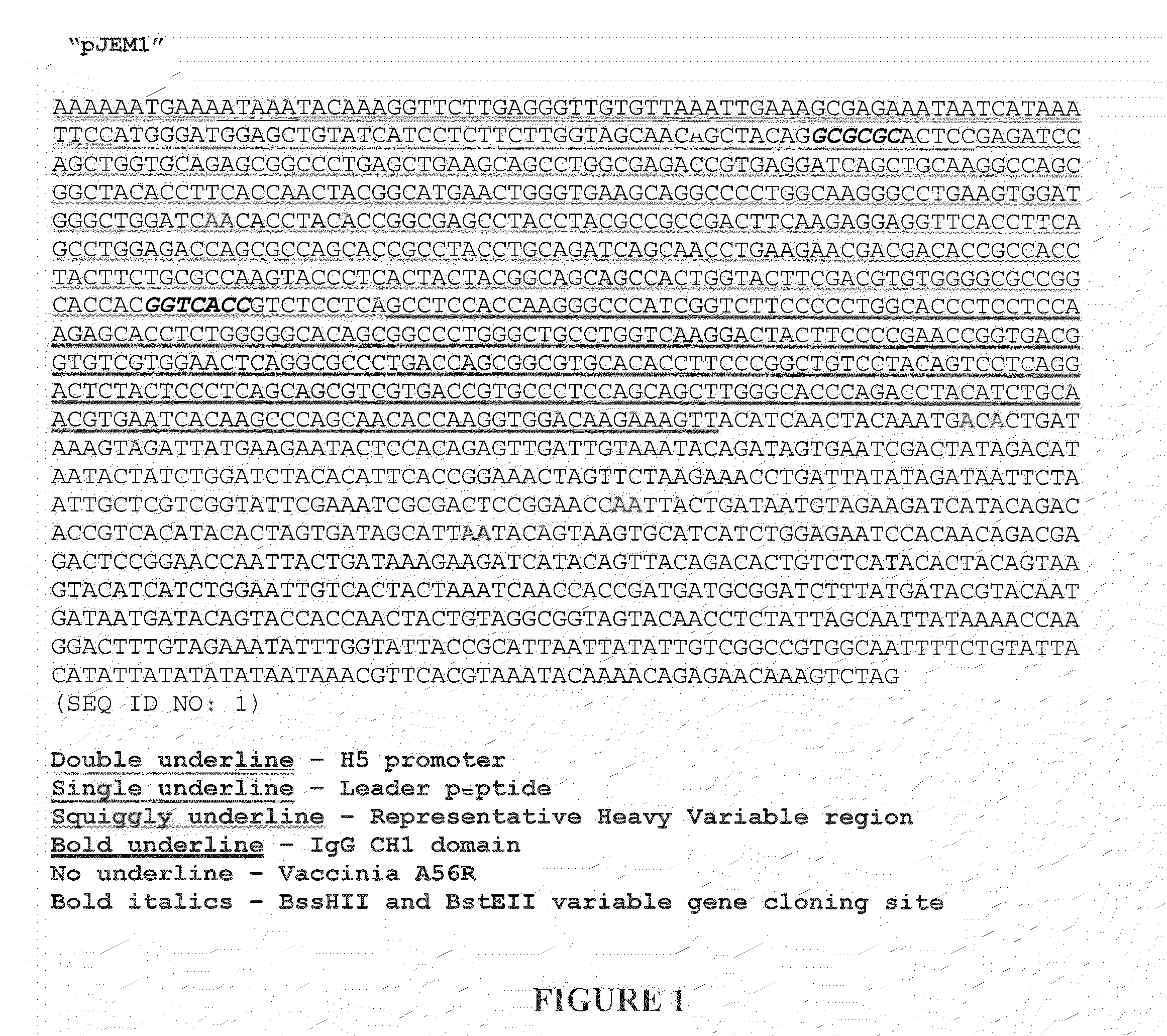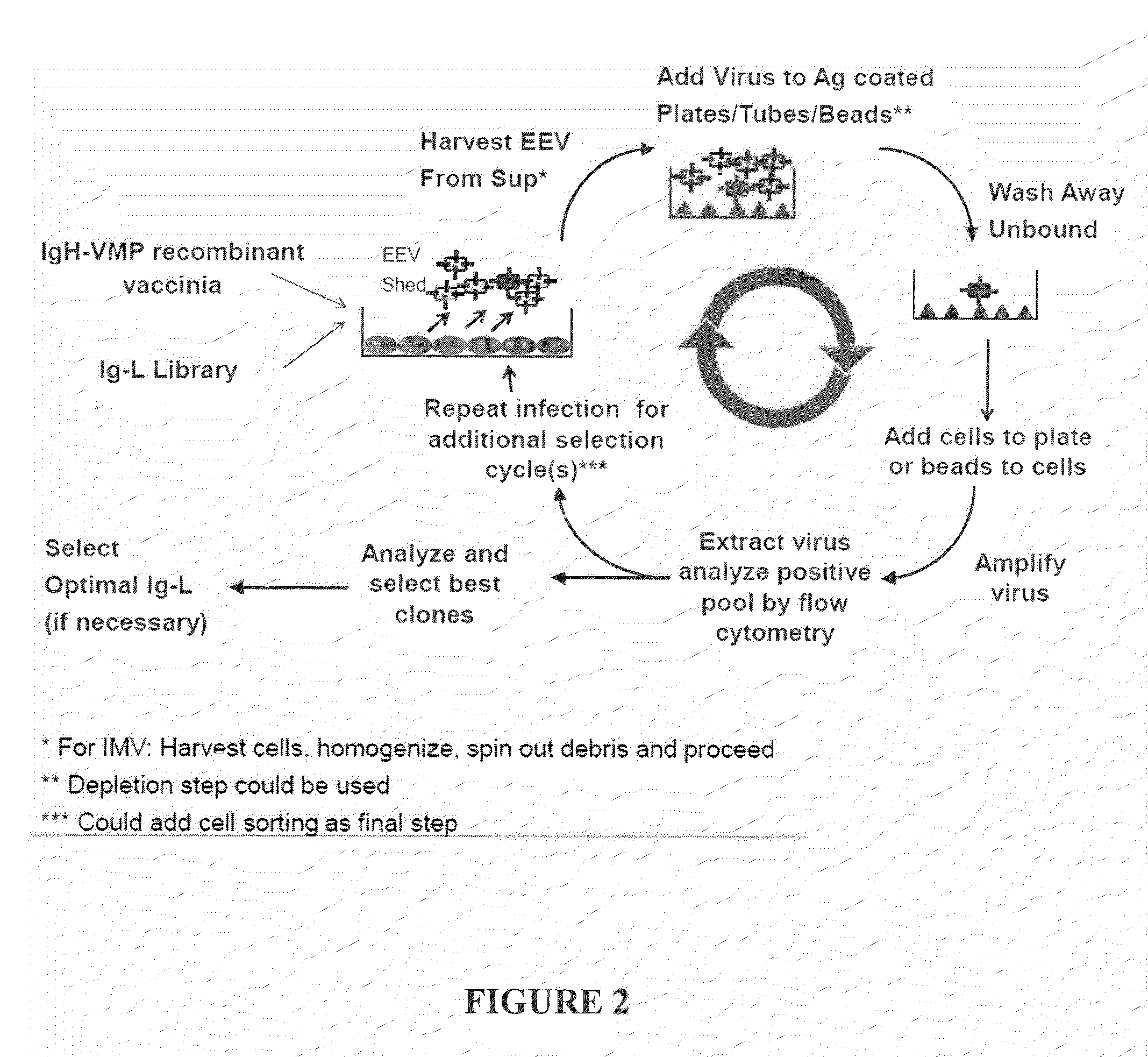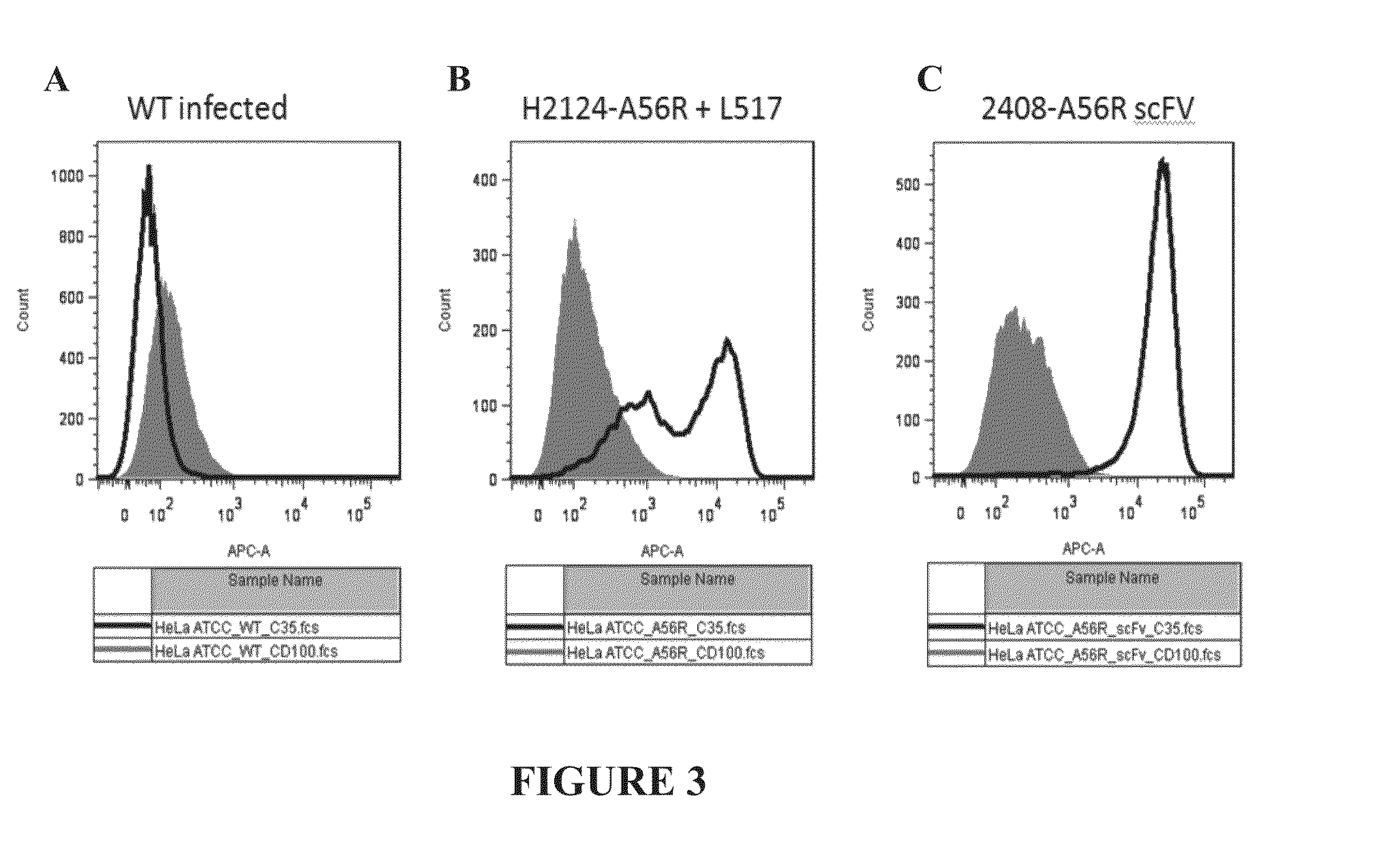Fusion Proteins to Facilitate Selection of Cells Infected with Specific Immunoglobulin Gene Recombinant Vaccinia Virus
a technology of recombinant vaccinia virus and fusion proteins, which is applied in the field of fusion proteins to facilitate selection of cells infected with specific immunoglobulin gene recombinant vaccinia virus, can solve the problems of difficult assembly of many antigen binding regions as a fusion protein, and achieve the effect of facilitating selection
- Summary
- Abstract
- Description
- Claims
- Application Information
AI Technical Summary
Benefits of technology
Problems solved by technology
Method used
Image
Examples
example 1
Preparation of CH1-A56R Fusion Protein
[0143]Heavy Chain fusion proteins were constructed to facilitate selection of specific immunoglobulin segments expressed on the cell surface of recombinant vaccinia virus.
[0144]An expression vector encoding a fusion protein including the human heavy chain CH1 domain of C gamma fused to the extracellular and transmembrane domains of A56R from Western Reserve Vaccinia virus, designated herein as CH1-A56R, as well as a C35-specific VH (H2124) was constructed by the following method.
[0145]pJEM1. An expression vector comprising a polynucleotide sequence encoding the human gamma immunoglobulin constant region (CH1), a fragment of vaccinia A56R, and a cassette for insertion of a human heavy chain variable region (e.g., H2124), designated herein as “pJEM1” was constructed. In short, p7.5 / tk, produced as described in PCT Publication No. WO 00 / 028016, incorporated herein by reference in its entirety, was converted into pJEM1 by the following method.
[0146]...
example 2
Expression of A56R Fusion Protein on Surface of Hela Cells
[0168]HeLa cells were infected or co-infected with recombinant EEV vaccinia virus expressing immunoglobulin fusion constructs, Variable Heavy (H2124) CH1-A56R (described in the Example above) and Ig-K (“A56R H+L”) or scFv-A56R (“A56R scFv”). An illustration of the general strategy for infection of cells with recombinant EEV vaccinia virus and the subsequent library selection steps is shown in FIG. 2. In the current example, instead of using libraries, the HeLa cells were co-infected with recombinant vaccinia virus expressing the VH (H2124) CH1-A56R Fusion and recombinant vaccinia virus expressing the Ig-K (A56R H+L) or infected with recombinant vaccinia virus expressing scFv-A56R. Fluorescence Activated Cell Sorting (FACS) analysis for C35 staining and CD100 staining of cells infected with EEV recombinant vaccinia virus was performed. Briefly, 1 μg / ml CD 100-His or 1 μg / ml C35-His were added to the samples and incubated for 3...
example 3
Plate Based and Solution Based Fusion Protein Selection
[0170]Recombinant vaccinia virus expressing A56R fusions with known C35 and VEGF binding molecules were tested for binding to target molecules using a panning based assay. Recombinant EEV expressing immunoglobulin molecules known to be specific for C35 (scFv2408-A56R, H2124-L517-A56R double gene, and L517+H2124-A56R co-infection) or VEGF (L7000+H7000-A56R) were produced in BSC1 cells (for about 24 hours). H2124-L517-A56R double gene produced the same antibody as L517+H2124-A56R, except the Ig-H and Ig-K genes were encoded by the same virus from the double gene and the Ig-H and Ig-K genes were encoded by separate viruses used for the H2124-A56R co-infection.
[0171]The clones in EEV format were tested by plaque assay. Sterile 96-well ELISA plates were coated with 1 μg / ml C35 or 1 μg / ml VEGF). EEV containing supernatant “Neat” (undiluted) was diluted by serial dilution generating 1:10 to 1:106 dilutions. 100 μl of the various virus ...
PUM
| Property | Measurement | Unit |
|---|---|---|
| concentration | aaaaa | aaaaa |
| volume | aaaaa | aaaaa |
| volume | aaaaa | aaaaa |
Abstract
Description
Claims
Application Information
 Login to View More
Login to View More - R&D
- Intellectual Property
- Life Sciences
- Materials
- Tech Scout
- Unparalleled Data Quality
- Higher Quality Content
- 60% Fewer Hallucinations
Browse by: Latest US Patents, China's latest patents, Technical Efficacy Thesaurus, Application Domain, Technology Topic, Popular Technical Reports.
© 2025 PatSnap. All rights reserved.Legal|Privacy policy|Modern Slavery Act Transparency Statement|Sitemap|About US| Contact US: help@patsnap.com



